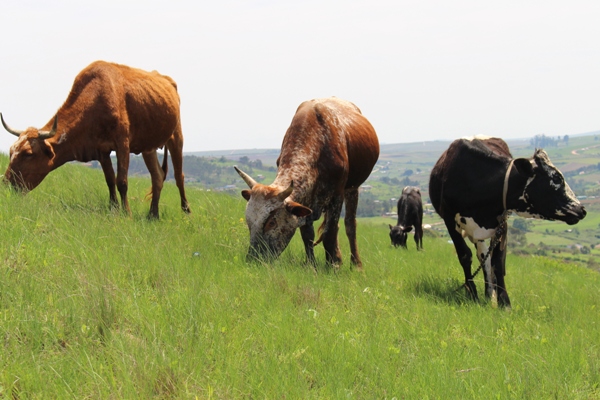

The answer is basic and straightforward. You have to decide, first of all, if you are going to be merely a livestock owner or whether you want to be a livestock farmer.
The difference lies in the fact that livestock farmers understand the production process whereby natural resources such as grazing are converted by livestock into a product that can be sold for an income. Part of this income must then also be allocated back to support the production process in the form of supplementary feed and livestock medicines.
During this production process specific management actions have to be taken if you are to produce enough of this good-quality product the market wants. To become a better livestock farmer, it doesn’t matter if you farm 10 or 300 head of cattle. If you can manage 10 animals correctly, you’ll also be able to manage greater numbers.
On the other hand, if you can’t follow good management practices successfully with 10 head of cattle, you wouldn’t be able to manage greater numbers productively.
So where do you start with good management practices concerning livestock farming?
A practical place is to start with newborn calves and lambs. The number of calves or lambs born that survive to the stage when they can be sold for an income is the most important factor in profitable livestock farming.
The challenge lies in the fact that calves and lambs are born without any resistance whatsoever to all the disease-causing germs in their environment.
1. The first good management practice is to decrease their exposure to disease-causing germs shortly after birth
- Don’t allow animals to give birth in a contaminated environment, such as a kraal that’s full of dung and mud.
- The biggest advantage small-scale farmers have is that they see and observe their animals daily.
- If you observe that an animal will calve or lamb down in the next few hours or days, separate them from the rest and keep them in a small area where they can give birth on grass that’s not contaminated by dung.
- Providing a safe place for calving or lambing, is one of the first steps in becoming a good livestock farmer.
2. Disinfect the navel of the newborn with iodine
- Research has shown that there is a 10% to 15% improvement in the survival of the newborn animals if the navel’s disinfected with iodine.
- The best product formulation is an iodine tincture spray formulated and registered for this purpose and also for the treatment and disinfecting of wounds.
3. Increase the resistance of the newborn animal by ensuring it gets the right intake of colostrum
- Calves and lambs are born without any resistance to all the disease-causing germs in the environment.
- Over the first 3 months of their lives, they will be exposed to these germs and they need to build up their resistance.
- They get resistance from their mother through the first milk, which is called colostrum.
- This first milk is very special because it contains some of the mother’s blood components, which go from the cow’s or ewe’s blood through the udder, into the first milk.
- These blood components are protein bodies called antibodies which make up the body’s defence system against germs.
- During the first 6 hours after birth, the stomach of the calf or lamb doesn’t digest the first milk obtained from its mother.
- Instead this milk (full of anti¬bodies from the mother’s blood) is taken up into the blood of the newborn through small openings in its intestines.
- It’s like a blood transfusion from the mother to the calf or lamb.
- This will give the newborn antibodies to protect it against germs for the first 3 months of its life.
- This process can only take place during the first 6 hours of life; after that the small openings in the intestines close and the stomach starts to digest the milk as food for the calf or lamb.
The first step in becoming a good livestock farmer is to prepare and take care of the birth process and the newborn. The number of calves or lambs born and surviving to the stage where they get marketed, is the most important factor determining income from livestock farming.
 Contact Jaguza Support
Contact Jaguza Support